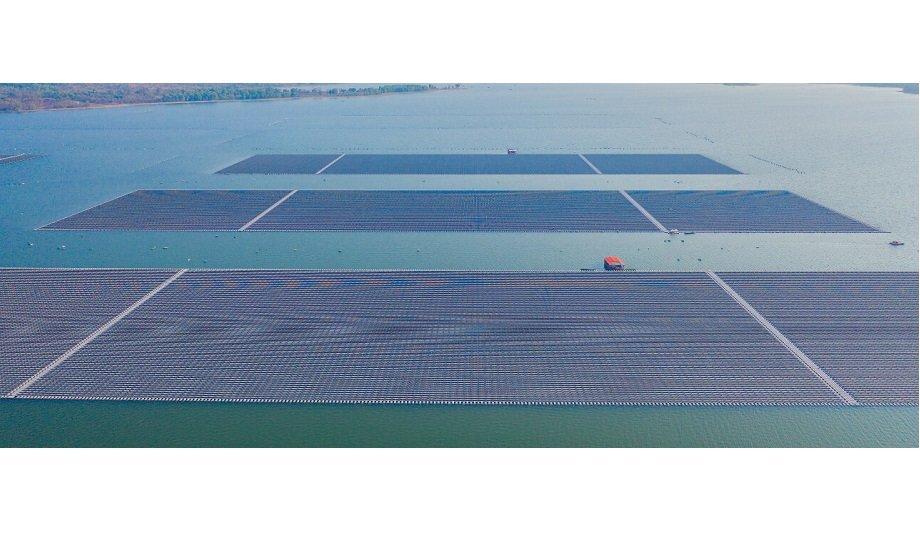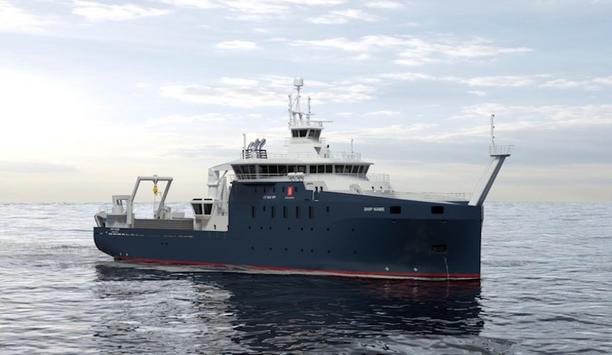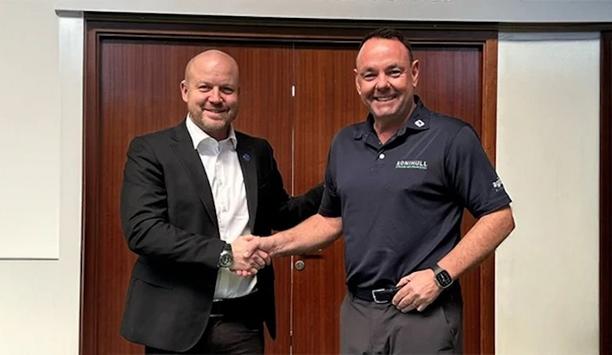DNV, the independent energy expert and assurance provider, acted as the Lender’s Technical Advisor, during the development phase, for Indonesia’s first-ever floating solar photovoltaic (PV) project at Cirata Reservoir in West Java.
Due diligence review
The project owner, PT. Pembangkitan Jawa Bali Masdar Solar Energi (PMSE), is a joint venture between the Abu Dhabi Future Energy Company PJSC – Masdar (MASDAR) and Indonesian state-owned electricity company Perusahaan Listrik Negara (PLN) subsidiary PJBI.
PMSE achieved financial close for the project on the 3rd of August after the satisfactory completion of the lender’s due diligence review. The senior debt of the floating solar project is being provided by Sumitomo Mitsui Banking Corporation, Societe Generale, and Standard Chartered Bank.
Cirata floating PV project
DNV supported the first phase of the Cirata floating PV project, which began in April 2020
Once operational, the 145 MWac Cirata floating PV plant will be one of the largest of its kind in South East Asia. The region is already home to several large-scale floating PV systems including Vietnam’s 70 MW FPV system in Quang Thanh and Singapore’s 60 MW facility at Tengeh reservoir.
The Cirata floating PV project will have a plant capacity of 145 MWac. All power generated by the plant will be supplied and sold to PLN under a power purchase agreement (PPA). DNV supported the first phase of the Cirata floating PV project, which began in April 2020 and involved pre-construction due diligence.
Environmental and social impact assessments
DNV’s role included undertaking site studies, estimating solar resource data and energy yield, and reviewing the financial model’s technical assumptions. DNV also reviewed the project design, technology, PPA, Engineering, Procurement, and Construction (EPC) contract and contractor, the Operation and Maintenance (O&M) contract, plan, and operator.
In addition to conducting technical due diligence, DNV also evaluated the environmental and social impact assessments to ensure compliance with internal best practices and International Finance Corporation (IFC) standards.
Indonesia’s first floating solar PV project
DNV is delighted to be supporting PMSE in developing Indonesia’s first floating solar PV project"
“DNV is delighted to be supporting PMSE in developing Indonesia’s first floating solar PV project which is expected to pioneer significant uptake in the technology as the country shifts to low-carbon power generation solutions,” said Brice Le Gallo, Regional Director for Energy Systems Asia Pacific at DNV, adding “Executing this complex project required a seamless collaboration across DNV’s resource pool of experts, from solar and power grids advisory to marine engineering.”
”DNV’s experience in advising sponsors and lenders on floating PV, which is a relatively new technology, was a key differentiator and was instrumental in its selection as the lender’s technical advisor for the Cirata floating PV project,” said Przemek Lupa, President Director of PMSE.
Safe, sustainable, and sound design
In addition to advising on 800 MW of installed floating PV capacity in the Asia Pacific, including Singapore’s Tengeh reservoir project, DNV has been involved in a combined 2 GW of floating PV projects worldwide.
In terms of industry-shaping technical expertise, DNV led the collaborative joint industry project (JIP) involving 24 industry participants which produced a set of recommended practices for accelerating safe, sustainable, and sound design, development, and operations of floating solar PV projects in March 2021.
The growth of floating PV
Initially considered a niche technology, floating PV is now the fastest-growing solar PV category, alongside ground-mounted utility-scale solar and rooftop PV.
As of August 2020, over 60 countries have actively pursued the deployment of floating PV, with more than 35 installing an estimated 350 operational floating PV systems, equal to a total of 2.6 GW of installed capacity.
Floating PV technology
The technology is expected to make renewable energy more viable and economic for countries
The use of floating PV technology is expected to grow by an average of 20% in the next five years as installation costs fall. The technology is expected to make renewable energy more viable and economic for countries and islands where land is scarce, expensive, or topographically unsuitable.
For Indonesia, which has historically relied on coal, gas, geothermal, and hydropower to produce electricity, the Cirata floating solar power plant is expected to pioneer significant growth in solar PV by demonstrating the technical and commercial feasibility of solar PV systems in the country.
Economic, social, and environmental benefits
In recognition of the significant economic, social and environmental benefits that it will bring, the Cirata floating PV project has been designated a National Strategic Project by the Indonesian government, giving it priority status.
The project is scheduled to begin commercial operations in the fourth quarter of 2022, powering 50,000 homes and displacing 214,000 tonnes of CO2 per year.
Renewable energy
Indonesia has over 600 lakes, dams, and reservoirs that could potentially be used for floating PV farms
Under Indonesia’s Electricity Infrastructure Acceleration Program, the government is aiming to supply 23% of the nation’s electricity needs from renewable energy by 2025. The plan will involve the construction of up to 60 floating PV plants in Indonesia.
As the world's largest archipelago, Indonesia has over 600 lakes, dams, and reservoirs that could potentially be used for floating PV farms.
Preserving water quality
Deploying floating PV systems on these water bodies will not only help conserve the country’s land resources but can also offer additional benefits such as preserving water quality and protecting these ecosystems from rising temperatures and water evaporation.
Indonesia is currently the largest energy user in the Association of Southeast Asian Nations (ASEAN) region. Shifting to clean energy may translate to savings of as much as USD 51.7 billion per year after the effects of improved health, air pollution, and climate change are factored into the energy cost savings, according to the International Renewable Energy Agency (IRENA).











